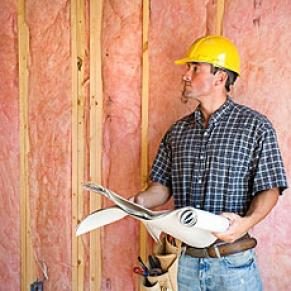
Insulate for the Greatest Savings
A sure-fire way to lower your heating bills is to improve the insulation in your property. Whether it’s the attic, walls or pipes, proper insulation makes a difference.
Insulate the attic. You can save heating costs by laying a fibreglass insulation blanket over the joists or filling the spaces between joists with loose-fill granules. Since up to 25% of your home’s heat is lost through the roof, you should recoup the cost within a few years.
Check existing insulation. Older houses often have only a thin layer of insulation. Ideally, it should be at least 20 cm (8 in.) deep. Top it up by 10-15 cm (4-6 in.) and you could be more comfortable and save money on heating costs.
Insulate the pipes. Insulate hot-water pipes with electric heat tape or flexible foam tubing, which you can buy from a plumbers’ supply or DIY store. You could save more than just the cost of lost heat-proper insulation helps to stop pipes freezing and bursting in winter.
Insulate the hot-water tank. Put an 8 cm (3 in.) thick insulating jacket around your hot-water tank to reduce heat loss by up to 75%. Check the owner’s manual to make sure a blanket is recommended for your model.
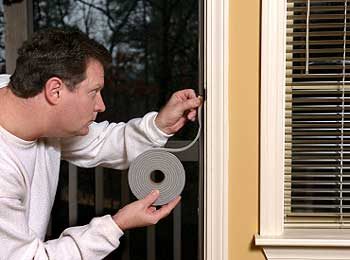
Simple Draft Proofing
You can lose up to 15% of the heat in your home through drafty doors and windows, and another 10% through the floors. To help avoid this:
Keep drafts out. A brush or PVC seal for external doors costs just a few dollars from your local DIY store. Draft-stopping tape can be used around offending doors or windows. Try using a lit incense stick to help pinpoint where small drafts are originating.
Seal up floor cracks. Filling cracks between floorboards with newspaper or sealant reduces drafts. If you’ve just sanded your floor, save the sawdust from the sander and mix it with PVC. Then fill any small cracks for a seamless finish.
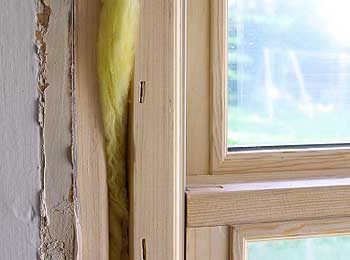
Sealing Windows against the Cold
The average house loses as much as 20% of its heat through the glass in windows; but there are ways of reducing this wasteful heat loss, such as double glazing, which can cut this loss by as much as half.
Save $60-$100 a year with double glazing. Although you won’t recoup the cost with the amount you save on heating bills, the other benefits associated with double glazing can make the expenditure worthwhile.
These benefits include the fact that all your old windows and frames are replaced with new ones, and the double glazing provides insulation against noise and smells and greater security against break-ins.
For an average home, initial expenditure on double-glazed windows would be around $10,000, with a projected fuel saving of approximately $100 a year from the most energy-efficient option, low-E (low-emissivity) double glazing.
Save $40-$60 a year with storm windows. Although adding storm windows to your existing windows won’t reap quite the savings you’ll get by installing brand-new, energy-efficient windows, it can come close. What’s more, your initial outlay is much lower-generally a few hundred dollars per window.
Save $20-$30 a year with a low-cost option. Specialized installers will treat your windows with a solar control film for greater energy savings. The cost: About $6 to $12 per square foot. For $10 per window or so, you can buy clear insulating film for your windows from the hardware store and install it yourself. Just stick it to the interior window frame and affix it with a hair dryer. Just remember that if you cover the window completely, it cannot be opened until the spring.
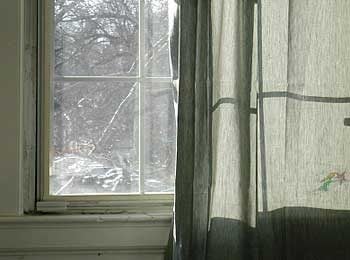
Harness Solar Power
Save on fuel bills by making use of solar energy that is available all year.
Retain warmth in cold weather. During winter, allow as much sun as possible into the house. On sunny days, open blinds and shutters, and tie back curtains. Trim evergreen trees and shrubs that shade the windows. As soon as the sun starts to go down, close the blinds or curtains to hold the heat inside.
Keep cool in summer. For the summer, take the opposite approach. Plant deciduous trees to shade the house in hot weather, and install awnings over south-facing windows. Close your windows and curtains by mid-morning when the temperature begins to rise, or leave them closed if you’ll be out all day. If temperatures cool down after sunset, open up the house to take advantage of any breezes.
Install a fireplace. A flickering fire can have a dual purpose: not only does it look good, it allows you to heat the room you’re sitting in (your living room or family room, for example), without having to turn up the temperature in the entire house. Gas fireplaces are about 50% less expensive than electric to operate and 33% less expensive than wood.
Prices for wood-burning fireplace inserts range from $1,500 to $3,000. These come with blowers that spread the heat, so you don’t lose it all up the chimney.
You’ll pay around $1,200 to $3,000 for a gas fireplace and around $1,000 to $4,000 for an electric fireplace.
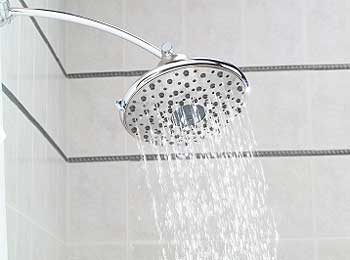
Cost Cutting Bathroom Fittings
When it comes time to replace your bathroom fittings, be sure to install new energy efficient models. With the fierce competition between manufacturers and retailers, good deals can be found.
Choose a shower over a bath. A three-minute shower uses a quarter of the water of a bath. And with a low-flow showerhead, you can save even more. But don’t spend too much time in the shower. The longer you take to wash, the more energy you burn.
Reduce water flow. Fitting inexpensive low-flow shower heads and taps in your home is a simple fix you can do yourself that will reduce the amount of water you use by half. Follow the manufacturer’s instructions-all you’ll need is a wrench or pliers to do the job.
Stop the shower while you soap. Check out shower heads with an off-on switch that lets you interrupt the water flow while you soap up, shave or shampoo and then resume the flow to rinse.
Buy a low-flow toilet. For $150 you can get a CSA-approved, low-flow toilet that will save up to 14 litres (3 gal) per flush, putting a big dent in your water bill and giving you a chance to help the environment. And don’t worry, the newer models work well.
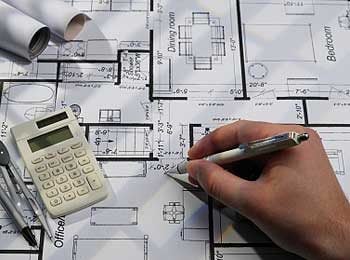
Save Money Using Government Inspectors
For $125 to $200, the federal government’s EnerGuide for Houses program has inspectors assess your house for energy efficiency (heating and cooling, windows and insulation). A report compares your house to others in your area and suggests ways to make it more energy-efficient and save you money.